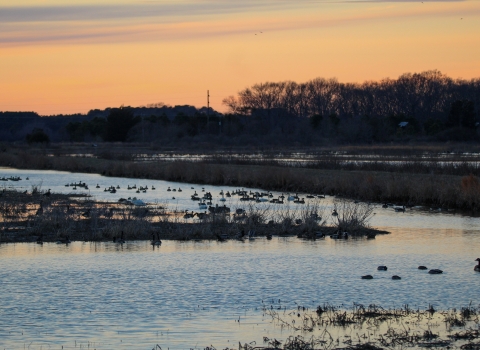To protect our nation’s native aquatic resources, the U.S. Fish and Wildlife Service today announced a proposed rule to list 10 nonnative freshwater fish species and 1 nonnative freshwater crayfish species as “injurious wildlife” under the Lacey Act. The fish are the crucian carp, Prussian carp, Eurasian minnow, roach, stone moroko, Nile perch, Amur sleeper, European perch, zander, and wels catfish. The crayfish is the common yabby.
Except for the zander, which is found in one lake in North Dakota, these species are not currently present in U.S. waters. However, all 11 species have the potential to become highly invasive if introduced into the wild in the United States to the detriment of our freshwater habitats, their native species, and the local economies they support.
“Proactive measures authorized under the Lacey Act are imperative for preventing invasive species invasive species
An invasive species is any plant or animal that has spread or been introduced into a new area where they are, or could, cause harm to the environment, economy, or human, animal, or plant health. Their unwelcome presence can destroy ecosystems and cost millions of dollars.
Learn more about invasive species from entering U.S. ecosystems,” said Service Director Dan Ashe. “This rule, if finalized, will help our nation avoid the ecological damages and economic losses associated with these 11 species while protecting our nation’s diverse natural resources for generations to come.”
The Service used its Injurious Wildlife Evaluation Criteria to determine that the proposed species qualify as injurious under the Lacey Act. The rule would prohibit the importation and interstate transport of any live animal, gamete, viable egg or hybrid of each species listed, except by permit for zoological, educational, medical or scientific purposes. An injurious listing does not prohibit intrastate (within a state) transport or exportation.
None of the 11 species are native to North America. Each is native to one or more of the continents of Europe, Asia, Africa, and Australia. Without listing, some species have the potential to be imported for the pet trade, aquaculture, or recreational fishing (as gamefish or live bait). Some may have no economic value but may be accidentally mixed in with other species. Once imported into the country, the species may enter U.S. waters when they are stocked for recreational fishing, when anglers release unused live bait, when people release nonnative pets, or when individuals of a species escape or are accidentally released.
The proposed rule opens a 60-day public comment period on the rule, the draft economic analysis, and the draft environmental assessment. The Service will review and consider the public and peer review comments and any new information that is received.
The public may submit comments regarding the proposed rule and associated materials by one of the following methods:
- Federal eRulemaking Portal: http://www.regulations.gov. In the search box, enter the docket number for the proposed rule, which is FWS–HQ–FAC–2013–0095. Click on “Comment Now!” to submit a comment. Please ensure that you have found the correct rulemaking before submitting your comment. The proposed rule and supporting documents can also be found at http://www.regulations.gov at the same docket number.
- U.S. mail or hand delivery: Public Comments Processing, Attn: FWS–HQ–FAC–2013–0095; U.S. Fish and Wildlife Service Headquarters, MS: BPHC, 5275 Leesburg Pike, Falls Church, VA 22041-3803.
The proposed rule will publish in the Federal Register on 10/30/15. Comments must be received by 12/29/15 and will not be accepted by e-mail or fax. All comments will be posted on http://www.regulations.gov.
For information about injurious wildlife visit: http://www.fws.gov/injuriouswildlife/. To learn more about the Service’s Fish and Aquatic Conservation Program please visit: http://www.fws.gov/fisheries/.


